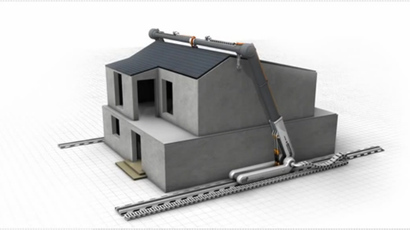Flying ‘3D printers’ could help seal nuclear waste, inventors say (VIDEO)

Flying 3D printers, as British researchers call a pair of drone copters they’ve built, could eventually become instrumental in sealing off radioactive waste and transporting it away from disaster zone.
A pair of “printer drones” – a hexacopter with six rotors and quadcopter with four rotors – were developed by engineers from Imperial College London to demonstrate their idea, according to British science magazine New Scientist.
Quadcopter is equipped with a printing module that mixes two chemicals to produce polyurethane foam mid-air, and sprinkles it on to the target.
The second drone can then land on the sticky target to remain attached to it until the foam sets, joining the two together. It can then escort the cargo of up to 2.5 kilograms away.
The target’s coordinates can be programmed into the drones, which makes their work more or less autonomous.
In a video recorded by the New Scientist, the pair of drones demonstrate their ability to move a dummy box containing ‘nuclear waste’.
According to the New Scientist, the drones were inspired by swiftlets – a south-east Asian bird – which builds nests using its own saliva strands. Mirko Kovac, who headed the team, said that he had wanted to develop an aerial robot that could make its own 3D structures.
The scaled up version of such system equipped with fuel cells instead of batteries could carry up to 40 kilograms, inventors say. In the future the team hopes that perhaps the 3D-printer drones could use their advanced technology to build their own ‘tree nests’ and recharging through solar panels.
“This is an exciting first step in the lab's development of co-operative robotic systems for building structures inspired by the natural world,” stated Thomas J Creedy, a PhD student who worked on the project.
The Imperial team state that the “ad-hoc construction of first response structures in search-and-rescue scenarios,” could be established as well as “printing structures to bridge gaps in discontinuous terrain.”















